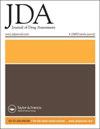Adherence of patients to oral oncolytic and neurologic specialty medications provided by a specialty pharmacy
IF 2.4
引用次数: 1
Abstract
Abstract Background: Specialty medications (SP-D) are high cost prescription medications designed for the treatment of complex chronic conditions, i.e. cancer and neurological diseases. Such medications require special handling and shipping, administration, and patient education. To achieve the desired treatment outcomes, including minimizing adverse events, medication adherence is key. There are barriers to poor medication adherence, some of which include high cost, poor understanding of disease and associated therapy, psychological status, forgetfulness, complex dosing regimens, and side-effects. The consequences of non-adherence include increased healthcare resource consumption and poor disease treatment outcomes, e.g. increased relapse, decreased survival time, and/or lack of patient satisfaction. Specialty pharmacy provided medication therapy management (SPMTM) can be important to achieving acceptable medication adherence and, therefore, better treatment outcomes. The specialty pharmacy is a community pharmacy focused on dispensing and providing clinical services pertaining to SP-D. It has pharmacy permits in 50 states as well as in Washington DC, Puerto Rico, and the US Virgin Islands. It is accredited by URAC and ACHC as a specialty pharmacy. Some of the key services provided by specialty pharmacy are: oncology, neurology, autoimmune disease, analgesia (non-controlled drug), investigational drugs, and other SP-D to treat rare/ultra-rare conditions. Aims: The primary objective of the study was to measure the adherence rate to the oncology and neurology SP-D dispensed by the specialty pharmacy. The secondary objective of this study is to compare the quality-of-life (QoL) of patients who voluntarily participated in the SPMTM program at the program’s start of care (SOC) assessment (before the SP-D had been started) and at the follow-up (F-U) assessment (after SP-D had been started). Methods: A retrospective, observational study of patient reported outcomes (PRO) was conducted at a specialty pharmacy among patients diagnosed with various forms of cancers and neurological issues who had prescriptions filled for SP-D from January 1, 2018 to December 31,2018. Patient education by the pharmacist was offered as part of the SPMTM program throughout patient participation in the program. Each patient was offered medication therapy assessment at SOC and 7 days prior to each refill dispense, using a proprietary clinical assessment instrument designed to capture patient reported data via telephonic interview with patients or their caregivers. Embedded in the assessment instruments were two QoL PRO metrics: (1) Number of days work/school missed; and (2) How have you been feeling? (1–10 scale, where 1 was feeling terrible and 10 was feeling wonderful). The means of the SOC (BEFORE SP drug state) and the F-U (AFTER SP drug state) data were captured monthly and annualized. The annualized means were compared, using the Mann-Whitney U-value (M-WU) two-tailed statistic to test for a statistically significantdifference between the annualized means of the respective QoL measures at the p < 0.05 level of significance. In addition, the overall mean of the Proportion of Days Covered (PDC) was calculated, using the URAC PDC formula. Results: The total number of unique patients was 39,567, and the average number of dispenses per unique patient was two. The number of unique patients who voluntarily participated in the SPMTM program and received clinical assessments was 33,243 (84%); 6,331 (16%) patients declined to participate in the SPMTM program. The number of patients who completed only the SOC assessment was 19,946 (60%); the number of patients who participated in only F-U assessment was 3,324 (10%); and the number of patients who participated in both assessments was 4,322 (13%). The overall mean annual Proportion of Days Covered (PDC) was 0.962 (96.2%). The medication adherence rate is 20.25% higher as compared to the industry standard adherence rate of ∼80%. The mean Days of work/school missed QoL metric at SOC was 0.16 days and it was 0.02 days after F-U assessment. The annualized mean difference in work/school days missed demonstrated an improvement between before and after receiving SP-D, and SPMTM was 0.14 days. The Mann-Whitney U-value (M-WU) was determined to be 4, which had a calculated p = 0.0001, and the M-WU value at the p < 0.05 level was 37. The How have you been feeling QoL metric annualized mean at SOC assessment was 7, and the annualized mean at refill assessment was 7.46. The total improvement in feeling is 0.46 higher on the 10-point scale. Therefore, patients reported improvement in how they felt after taking SP-D and participating in the SPMTM program. The M-WU value is 4, and calculated p = 0.0001. The critical value of M-WU at p < 0.05 is 37. Conclusions: From this 1-year study it was determined that: (1) the annualized PDC adherence rate of 0.96 was 20.25% higher than the industry standard of 0.8; (2) the Number of days work missed QoL was less after starting on a SP-D with SPMTM; and (3) the How patients feel QoL metric demonstrated that patients felt better after starting SP-D with SPMTM. The improved adherence rate was associated with taking the SP-D while participating in the SPMTM. The encouraging findings of this study suggest that additional larger studies should be conducted.患者对专业药房提供的口服溶瘤药物和神经专科药物的依从性
背景:特种药物(SP-D)是一种高成本的处方药,用于治疗复杂的慢性疾病,如癌症和神经系统疾病。这些药物需要特殊的处理和运输、管理和患者教育。为了达到预期的治疗效果,包括尽量减少不良事件,药物依从性是关键。药物依从性差存在一些障碍,其中一些障碍包括费用高、对疾病和相关治疗的了解不足、心理状况、健忘、复杂的给药方案和副作用。不依从性的后果包括增加医疗资源消耗和不良的疾病治疗结果,例如增加复发、减少生存时间和/或缺乏患者满意度。专业药房提供的药物治疗管理(SPMTM)对于实现可接受的药物依从性很重要,因此,更好的治疗结果。专业药房是一个社区药房,专注于分配和提供与SP-D有关的临床服务。它在50个州以及华盛顿特区、波多黎各和美属维尔京群岛都有药房许可证。它被URAC和ACHC认证为专业药房。专业药房提供的一些关键服务包括:肿瘤、神经病学、自身免疫性疾病、镇痛(非控制药物)、研究药物和其他治疗罕见/超罕见疾病的SP-D。目的:本研究的主要目的是测量专业药房分配的肿瘤和神经学SP-D的依从率。本研究的次要目的是比较自愿参加SPMTM计划的患者在计划开始护理(SOC)评估(SP-D开始前)和随访(F-U)评估(SP-D开始后)的生活质量(QoL)。方法:在2018年1月1日至2018年12月31日期间,在一家专业药房对诊断为各种形式癌症和神经问题的患者进行了患者报告结果(PRO)的回顾性观察性研究。药剂师对患者的教育是SPMTM项目的一部分,贯穿患者参与项目的全过程。每位患者在SOC和每次重新配药前7天接受药物治疗评估,使用专有的临床评估工具,旨在通过与患者或其护理人员的电话访谈获取患者报告的数据。在评估工具中嵌入了两个QoL PRO指标:(1)旷工/缺课天数;(2)你感觉怎么样?(1 - 10分,1分感觉很糟糕,10分感觉很好)。SOC (SP前药物状态)和F-U (SP后药物状态)数据的均值按月和年计算。比较年化均值,采用Mann-Whitney u值(M-WU)双尾统计量,在p < 0.05的显著性水平上检验各自生活质量测量的年化均值之间的统计学差异。此外,使用URAC PDC公式计算了PDC的总体平均值。结果:独立患者总数为39,567人,平均每个独立患者配药次数为2次。自愿参加SPMTM项目并接受临床评估的独特患者数量为33,243 (84%);6331例(16%)患者拒绝参加SPMTM项目。仅完成SOC评估的患者为19,946例(60%);仅参与F-U评估的患者人数为3324人(10%);参与两项评估的患者人数为4322人(13%)。年平均覆盖日数比例(PDC)为0.962(96.2%)。与行业标准(约80%)相比,服药依从率提高了20.25%。在SOC中,工作/学校错过生活质量指标的平均天数为0.16天,在F-U评估后为0.02天。工作/上学缺勤天数的年化平均差异表明,接受SP-D前后有所改善,SPMTM为0.14天。确定Mann-Whitney u值(M-WU)为4,计算p = 0.0001,在p < 0.05水平下M-WU值为37。你感觉生活质量指标在SOC评估中的年化平均值为7,在补充评估中的年化平均值为7.46。在10分制中,感觉的总改善程度高出0.46分。因此,患者报告在服用SP-D和参加SPMTM计划后,他们的感觉有所改善。M-WU值为4,计算p = 0.0001。M-WU的临界值为37,p < 0.05。结论:经过1年的研究,得出:(1)PDC的年化依从率为0.96,比行业标准0.96高出20.25%。 8;(2)采用SPMTM的SP-D开始工作后,错过生活质量的天数较少;(3)患者感觉生活质量指标显示患者在SPMTM开始SP-D后感觉更好。改善的依从率与参加SPMTM时服用SP-D有关。这项研究令人鼓舞的发现表明,应该进行更多的更大规模的研究。
本文章由计算机程序翻译,如有差异,请以英文原文为准。
求助全文
约1分钟内获得全文
求助全文

 求助内容:
求助内容: 应助结果提醒方式:
应助结果提醒方式:


